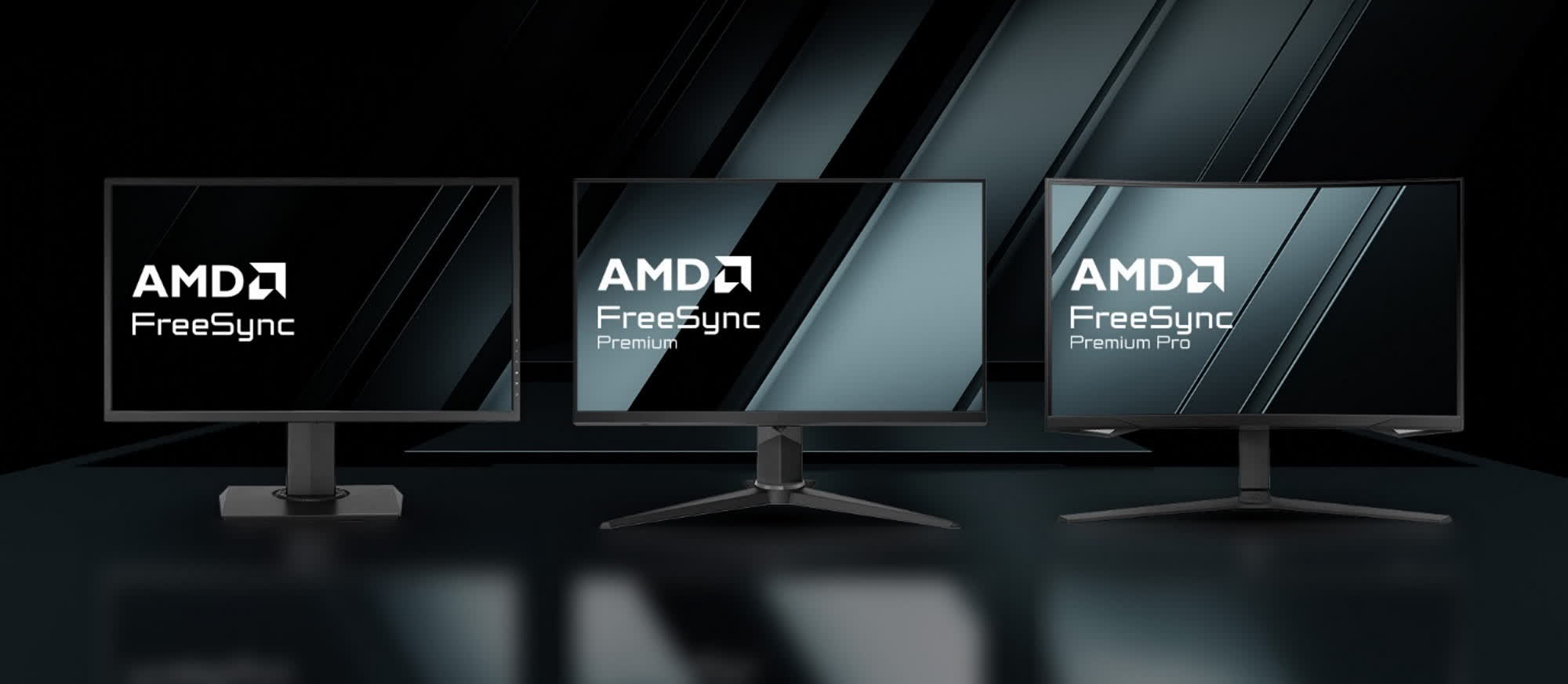Forward-looking: First introduced in 2015, AMD’s FreeSync Variable Refresh Rate (VRR) solution provided tear- and stutter-free experiences under certain conditions. Today’s gaming hardware is more powerful than ever, and monitors have advanced much in the last nine years.
In September 2023, AMD updated the official FreeSync tier requirements for gaming monitors and TVs. More recently, the company revealed what those changes mean for consumers and how the relentless evolution of PC and gaming hardware has affected its VRR technology.
Back in 2015, 60Hz monitors were more than satisfactory for gaming. Today’s powerful graphics cards have pushed titles to all new levels, and gaming monitors have followed suit, offering higher refresh rates than ever. Even many affordable displays are outing 144Hz or more.
Monitors also have additional ways to create an immersive experience beyond higher refresh rates. Curved displays, ultra-wide configurations, and HDR (High Dynamic Range) can add depth, expand the field of view, and enhance contrast and color accuracy for more vibrant and realistic visual experiences.

According to AMD, modern monitors can blur the line between reality and fantasy. So FreeSync technology must evolve to provide a stutter and tear-free gaming experience in this new visual era. Maximum refresh rates for FreeSync-certified monitors and TVs have increased, while notebook requirements remain unchanged.
In particular, monitors and TVs can attain the “basic” FreeSync certification with a horizontal resolution of less than 3440 pixels and a maximum refresh rate of 144Hz. FreeSync Premium specs require a maximum refresh rate of 200Hz for monitors and 120Hz for televisions. Lastly, the FreeSync Premium Pro specs must support FreeSync HDR effects on top of FreeSync Premium’s specs.
FreeSync is now the most prominent gaming display ecosystem, with over 4,000 certified products. The technology works with TVs, PC monitors, notebooks, and gaming consoles to provide a stutter-free experience through DisplayPort, HDMI, and USB connections. FreeSync can guarantee a “great display experience,” and AMD wants to keep it that way.
However, it’s not 100 percent foolproof. Pro gamers can attest that situations vary from setup to setup. Syncing a game’s frame rate to the variety of displays available is much more complex and troublesome in some instances.

